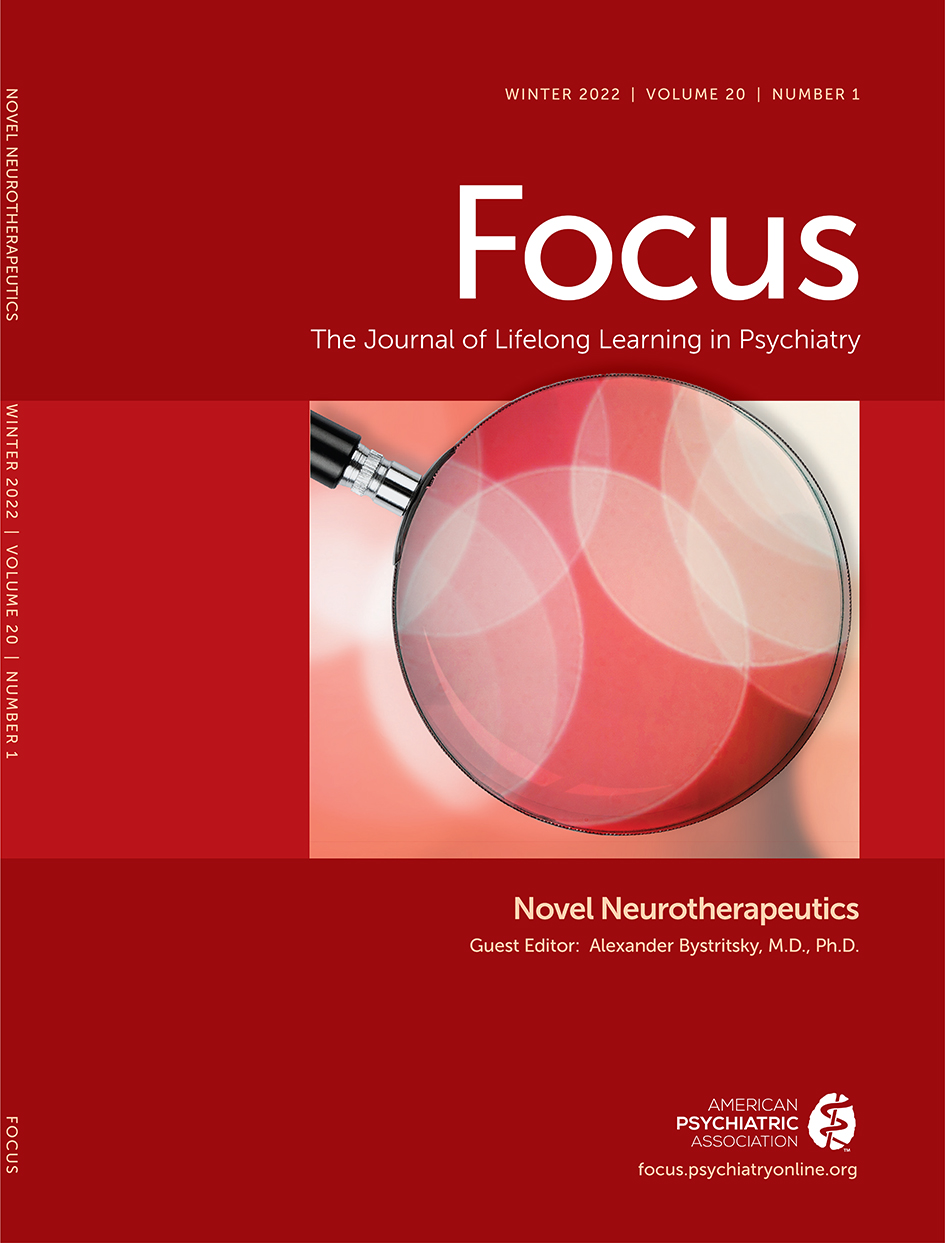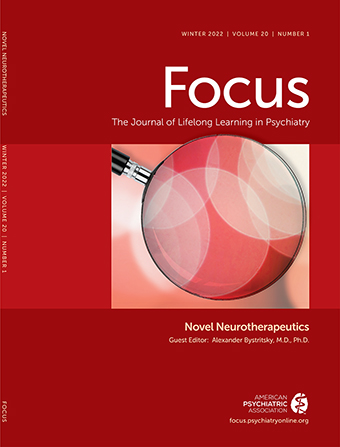On entering the 21st century, nearly 125 years after the first described VNS intervention, two of the biggest barriers to VNS are still its relatively high cost and invasiveness (
19). These factors formed a challenge that kept researchers from conducting prospective follow-up trials in the clinical population as well as translating promising VNS findings from animals to humans. The need for an inexpensive, noninvasive way to stimulate the vagus nerve gave birth to a noninvasive form of VNS called transcutaneous auricular VNS (taVNS), which stimulates the auricular branches of the vagus nerve that innervate the human ears (
20,
21).
Development of taVNS
taVNS was perhaps first suggested as a treatment for seizures in the literature by Ventureyra in 2000 (
22) and is a fairly simple and inexpensive intervention (
23). Unlike implanted VNS, all the components are external. Electrodes are affixed to the ear at surface landmarks predetermined to target the underlying auricular branch of the vagus nerve. An external pulse generator delivers electrical stimulation to the adhesive or clipped ear electrodes, which can be portable, self-administered, and delivered at home (
23).
After solving the human ergonomics problem of creating these new systems that allow for fitting electrodes in and around the ear, along with advancements in electrode manufacturing, researchers began to address the fundamental question of whether taVNS was feasible and safe. taVNS safely uses low levels of electrical current to activate the central and peripheral nervous systems (
24–
26). Because of cardiac projections of the vagus nerve, however, several researchers addressed the concern of potential induction of bradycardia during taVNS sessions. Like cervical VNS, it is exceedingly rare that bradycardia events occur during taVNS (
27,
28), and the only side effects seen are related to the administration of transcutaneous electrical current, which causes redness and skin irritation in some individuals at the site of stimulation (
28).
In the development of new neuromodulatory interventions, it is important to determine optimal parameters for stimulation (
29). A recent review of over 130 VNS and taVNS trials demonstrated the wide range of electrical wave form settings that can be used to treat neuropsychiatric disorders (
30). The three critical parameter settings are pulse width, frequency, and intensity. There is a broad range of taVNS parameters (current intensity, 0.13–50 mA; pulse width, 20–500 μs; frequency, 1–30 Hz; on time, 0.5–1,800 s; off time, 30–270 s); often, these parameters are higher than the implanted VNS parameters. High parameter settings in implanted VNS not only risk increased discomfort to the patient but also risk damaging the nerve. Skin serves as an insulator for taVNS, which utilizes a wider range of investigated parameters, all of which seem to have similar safety profiles. In back-to-back studies, Badran and colleagues (
31) investigated whether varying the frequency and pulse width would change the biological activity of taVNS in healthy individuals. Using heart rate as a biomarker, the authors demonstrated that higher pulse widths (250 µs and 500 µs), along with higher frequencies (10 Hz and 25 Hz), have larger effects on activating the vagus nerve and transiently reducing heart rate. This activation of the parasympathetic response is a key biomarker of determining vagal engagement and, thus, is a convenient marker of short-term response. Implanted VNS shares a similar biomarker (
32), causing transient reductions in heart rate at higher parameter settings in the operating room; however, the patients do not receive therapy at those levels and, therefore, do not report reductions in heart rate during treatment.
Aside from parameter optimization and physiology investigations, groups attempted to determine whether the brain activation profile of taVNS mimicked that of implanted VNS. Several groups utilized functional magnetic resonance imaging (fMRI) to image the brain during implanted VNS (
33,
34). These studies demonstrated that higher pulse widths and frequencies increased the brain response to VNS without changing the regional specificities. The commonly activated areas in response to implanted VNS were revealed as the prefrontal cortex, insula, caudate, putamen, hippocampus, cerebellum, and cingulate. Several groups followed these seminal VNS and fMRI findings in a similar fashion, but replaced implanted VNS with noninvasive VNS (
35–
38). These studies all reliably demonstrate that taVNS produces significant increased activation in the brain stem, hippocampus, amygdala, prefrontal cortex, thalamus, cerebellum, and cingulate. Although the afferent pathway of the auricular branch of the vagus nerve (ABVN) is still poorly understood, there is generally a consensus hypothesis that stimulation of the ABVN activates the main vagal afferent pathway (through the brainstem to upstream cortical projections).
Treatment of Epilepsy and Depression With taVNS
The clinical utility of taVNS is still in its infancy. The earliest clinical application of taVNS was suggested as a treatment for epilepsy, which is a logical extension of the early implanted VNS literature described earlier in this article. A randomized, double-blind, sham-controlled trial was conducted to determine these effects in what was known as the cMPsE02 trial by Bauer and colleagues (
39). In 2016, they published their findings, which unfortunately were negative, having been unable to determine superiority of active taVNS versus sham control in 76 patients. Although disappointing, the use of a 1 Hz sham stimulation setting may have contributed to the large effect size of the sham-control group.
There have been several small depression trials using taVNS. Initially, in the 2013 study by Hein et al. (
40), patients were stimulated daily for two weeks, and taVNS was shown to reduce Beck Depression Inventory scores significantly in the active treatment group, compared with those in the sham-control group, but no effect on HRSD scores was found. Following this trial, Fang and colleagues (
41) began to explore at-home taVNS for depression. Individuals self-administered either active taVNS or sham taVNS for 30 days at home, and this study revealed that HRSD scores were reduced significantly in the active taVNS group, compared with those in the sham-control group. fMRI conducted on these patients suggested that if significant brain activation is measured during imaging, it was associated with significant clinical improvement (HRSD scores) at the end of treatment (
42). In a nonrandomized controlled study of taVNS in patients with mild or moderate depression, these findings were replicated, which demonstrated significant reductions in HRSD scores after 12 weeks of daily taVNS (
43).
Because of its low cost and noninvasive nature, there is an expanding research field of taVNS that is exploring its use in several promising applications. These applications, although not covered in this review, include gastrointestinal conditions (
44,
45), motor rehabilitation (
46,
47), addictions (
48), and psychiatric conditions (
49,
50). There are also emerging closed-loop applications that pair taVNS with movement (
51) and physiology (
52).

